One of entertainment’s true black cultural icons has passed away. Ever since childhood, my life was touched by the presence, of Geoffrey Holder. From commercials to film to actually meeting him, Holder has unquestionably influenced, encouraged and inspired dynamics of my life, that led me to choose pursuing the world of entertainment and writing as a career. A true giant in stature and in life, I am honored to have been in his presence and humbled, by the advice he rendered.
I was so excited to meet him at an art exhibit, that I said my name too quickly for him to hear. After asking me what did I say, he expressed, “Your mother gave you that name, when you introduce yourself, say it slowly.” Update 10/ 09: Tomorrow night, Broadway will dim the lights in memory of the Tony Award winner… http://pagesix.com/2014/10/08/broadway-to-dim-lights-for-geoffrey-holder/. I could google and research the history of Mr. Holder, however the New York Times has already written a substantial and eloquent article that I’ll simply share…
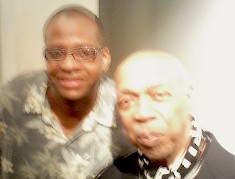 FROM THE NEW YORK TIMES BY JENNIFER DUNNING and WILLIAM McDONALD: Dancer, choreographer, actor, composer, designer and painter who used his manifold talents to infuse the arts with the flavor of his native West Indies and to put a singular stamp on the American cultural scene, not least with his outsize personality, died on Sunday in Manhattan. He was 84. The cause was complications from pneumonia, according to Charles M. Mirotznik, a spokesman for the family.
FROM THE NEW YORK TIMES BY JENNIFER DUNNING and WILLIAM McDONALD: Dancer, choreographer, actor, composer, designer and painter who used his manifold talents to infuse the arts with the flavor of his native West Indies and to put a singular stamp on the American cultural scene, not least with his outsize personality, died on Sunday in Manhattan. He was 84. The cause was complications from pneumonia, according to Charles M. Mirotznik, a spokesman for the family.
Few cultural figures of the last half of the 20th century were as multifaceted as Mr. Holder, and few had a public presence as unmistakable as his, with his gleaming pate atop a 6-foot-6 frame, full-bodied laugh and bassoon of a voice laced with the lilting cadences of the Caribbean. Mr. Holder directed a dance troupe from his native Trinidad and Tobago, danced on Broadway and at the Metropolitan Opera, won Tony Awards in 1975 for musical direction and costume design for “The Wiz,” a rollicking, all-black version of “The Wizard of Oz.” His choreography was in the repertory of the Alvin Ailey American Dance Theater and the Dance Theater of Harlem. He acted onstage and in films and was an accomplished painter, photographer and sculptor whose works have been shown in galleries and museums. He published a cookbook.
Mr. Holder acknowledged that he achieved his widest celebrity as the jolly, white-suited television pitchman for 7Up in the 1970s and ’80s, when in a run of commercials, always in tropical settings, he happily endorsed the soft-drink as an “absolutely maaarvelous” alternative to Coca-Cola — or “the Un-Cola,” as the ads put it. https://www.youtube.com/watch?v=AXmc7DG4uu8. Long afterward, white suit or no, he would stop pedestrian traffic and draw stares at restaurants. He even good-naturedly alluded to the TV spots in accepting his Tony for directing, using their signature line “Just try making something like that out of a cola nut.” Geoffrey Richard Holder was born into a middle-class family on August 1, 1930, in Port of Spain, Trinidad and Tobago, one of four children of Louise de Frense and Arthur Holder, who had immigrated from Barbados. Geoffrey attended Queen’s Royal College, an elite secondary school in Trinidad. There he struggled with a stammer that would plague him into early adulthood.
“At school, when I got up to read, the teacher would say, ‘Next,’ because the boys would laugh,” he said in an oral history interview. Growing up, Mr. Holder came under the wing of his talented older brother, Arthur Aldwyn Holder, known to everyone by his childhood nickname, Boscoe. Boscoe Holder taught Geoffrey painting and dancing and recruited him to join a small, folkloric dance troupe he had formed, the Holder Dancing Company. Boscoe was 16; Geoffrey, 7. Geoffrey’s career mirrored that of his brother in many ways; Boscoe Holder, too, went on to become a celebrated dancer, choreographer, musician, painter and designer. And he, too, left Trinidad, in the late 1940s, for England, where he performed on television and onstage. Geoffrey took over the dance company, as its director and lead performer, and he took it to New York City in 1954, invited by the choreographer Agnes de Mille, who had seen the troupe perform two years before in St. Thomas, in the Virgin Islands. She arranged an audition for the impresario Sol Hurok. To pay for the troupe’s passage, Mr. Holder, already an established young painter, sold 20 of his paintings.
After dropping his bags at an uncle’s apartment in Brooklyn, he fell in love with the city. “It was a period when all the girls looked like Janet Leigh and Elizabeth Taylor, with crinoline petticoats and starched hair,” he told The New York Times in 1985. “The songs of that period were the themes from ‘The Moulin Rouge’ and ‘Limelight,’ and it was so marvelous to hear the music in the streets and see the stylish ladies tripping down Fifth Avenue. Gorgeous black women, Irish women — all of them lovely and all of them going somewhere.” Mr. Holder had the good fortune to arrive in New York at a time of relative popularity for all-black Broadway productions as well as black dance, both modern and folk. Calypso music was also gaining a foothold, thanks largely to Harry Belafonte.
For a while Mr. Holder taught classes at the Katherine Dunham School and was a principal dancer for the Metropolitan Opera Ballet, in 1955 and ’56. He continued to dance and direct the Holder dance company until 1960, when it disbanded. In the meantime, at a dance recital, he caught the attention of the producer Arnold Saint-Subber, who was putting together a show with a Caribbean theme. Thus did Mr. Holder make his Broadway debut on December 30, 1954, as a featured dancer in the “House of Flowers,” a haunting, perfumed evocation of West Indian bordello life, with music by Harold Arlen and a book by Arlen and Truman Capote, based on his novella of the same name. Directed by Peter Brook at the Alvin Theater, it starred Diahann Carroll and Pearl Bailey, and among its dancers was a ravishingly pretty young woman named Carmen de Lavallade. 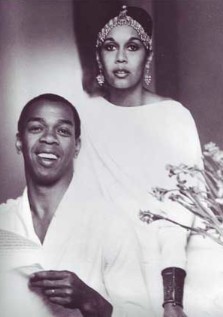 She and Mr. Holder married in 1955, had a son, and sometimes shared the stage. Mr. Holder is survived by Ms. de Lavallade and their son, Léo.
She and Mr. Holder married in 1955, had a son, and sometimes shared the stage. Mr. Holder is survived by Ms. de Lavallade and their son, Léo.
One character Mr. Holder played in the musical was the top-hatted Baron Samedi, the guardian of the cemetery and the spirit of death, sex and resurrection in Haitian Voodoo culture. Mr. Holder relished Samedi: he played him again in the 1973 James Bond film, “Live and Let Die” (the first of the Bond franchise to star Roger Moore), and featured him in “Banda” (1982), one of Mr. Holder’s major dance works. 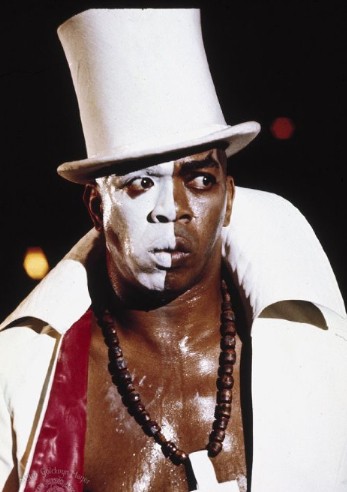 His Voodoo villain in “Live and Let Die” was of a piece with much of his sporadic film career: with his striking looks and West Indian-inflected voice, producers tended to cast Mr. Holder in roles deemed exotic. In “Doctor Dolittle” (1967), he was a giant native who ruled a floating island as William Shakespeare (the Tenth). In Woody Allen’s “Everything You Always Wanted to Know About Sex * But Were Afraid to Ask” (1972), he played a sorcerer. In “Annie” (1982), he was the Indian servant Punjab. In the 1992 romantic comedy “Boomerang,” he played a randy director of commercials working for Eddie Murphy’s playboy advertising executive.
His Voodoo villain in “Live and Let Die” was of a piece with much of his sporadic film career: with his striking looks and West Indian-inflected voice, producers tended to cast Mr. Holder in roles deemed exotic. In “Doctor Dolittle” (1967), he was a giant native who ruled a floating island as William Shakespeare (the Tenth). In Woody Allen’s “Everything You Always Wanted to Know About Sex * But Were Afraid to Ask” (1972), he played a sorcerer. In “Annie” (1982), he was the Indian servant Punjab. In the 1992 romantic comedy “Boomerang,” he played a randy director of commercials working for Eddie Murphy’s playboy advertising executive.
Mr. Holder was multitasking before the term gained currency. In 1957 he landed a notable acting role playing the hapless servant “Lucky” in an all-black Broadway revival of Samuel Beckett’s “Waiting for Godot,” directed by Herbert Berghof. The show, just seven months after the play’s original Broadway production, closed after only six performances because of a union dispute, but the role, with its rambling, signature 700-word monologue, lifted Mr. Holder’s acting career. That same year, he choreographed, and danced in, a revival of the George and Ira Gershwin musical “Rosalie” in Central Park. And he received a Guggenheim fellowship in painting. Painting was a constant for him. Whether life was hectic or jobs were scarce, he could usually be found in the SoHo loft he shared with Ms. de Lavallade, absorbed in work that drew on folk tales and often delivered biting social commentary. On canvases throughout the studio sensuous nudes jostled for space with elegantly dressed women, ghostly swimmers nestled beside black Virgin Marys, bulky strippers seemed to burst out of their skins, mysterious figures peered out of tropical forests.
His work was shown at the Corcoran Gallery in Washington and at the Guggenheim Museum in New York; and then there was his photography, and his sculpture. His visual creativity extended to costume designs, “The Wiz” being just one showcase. Another was John Taras’s 1982 production of “The Firebird” for the Dance Theater of Harlem, in which the Russian fairy tale was relocated to a tropical forest. Mr. Holder designed both the sets and the costumes, one of which was a blend of 30 or 40 colors. He earned another Tony nomination for best costume design for the 1978 Broadway musical “Timbuktu!,” an all-black show based on the musical “Kismet.” He also directed and choreographed “Timbuktu!” Mr. Holder’s dance designs were equally bold. 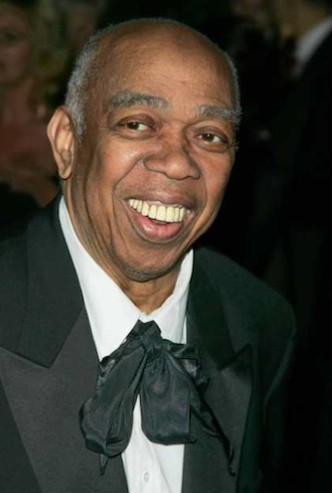 Reviewing a 1999 revival of “Banda” by the Dance Theater of Harlem, Anna Kisselgoff wrote in The Times, “Mr. Holder is a terrific showman, and his mix of Afro-Caribbean rituals, modern dance and even ballet’s pirouettes is potent and dazzling.” Other Holder dance classics were “Prodigal Prince” (1971), a dreamlike re-creation of the life and work of Hector Hyppolite, the Haitian folk painter, for which he also composed the musical score; and “Dougla” (1974), an evocation of a mixed-race Caribbean wedding. ‘Dougla’ refers to people who are of African and Indian descent. (Click on paintings for full view)
Reviewing a 1999 revival of “Banda” by the Dance Theater of Harlem, Anna Kisselgoff wrote in The Times, “Mr. Holder is a terrific showman, and his mix of Afro-Caribbean rituals, modern dance and even ballet’s pirouettes is potent and dazzling.” Other Holder dance classics were “Prodigal Prince” (1971), a dreamlike re-creation of the life and work of Hector Hyppolite, the Haitian folk painter, for which he also composed the musical score; and “Dougla” (1974), an evocation of a mixed-race Caribbean wedding. ‘Dougla’ refers to people who are of African and Indian descent. (Click on paintings for full view)
In 1959 he published a book on Caribbean folklore, “Black Gods, Green Islands,” written with Tom Harshman and illustrated by Mr. Holder; in 1973 he produced “Geoffrey Holder’s Caribbean Cookbook.” He himself was the subject of books and documentaries, including “Carmen & Geoffrey” (2009), by Linda Atkinson and Nick Doob. Mr. Holder said his artistic life was governed by a simple credo, shaped by his own experience as a West Indian child who had yet to see the world. “I create for that innocent little boy in the balcony who has come to the theater for the first time,” he told Dance Magazine in 2010. “He wants to see magic, so I want to give him magic. He sees things that his father couldn’t see.”
A Funkalicious blog from 2009 when I first met Mr. Holder… https://museumofuncutfunk.com/2009/05/23/funken-geoffrey-holder/
for the LOVE and FUNK of Geoffrey Holder – “Stran-Ge, Starn-Ge!!!”
c-dub

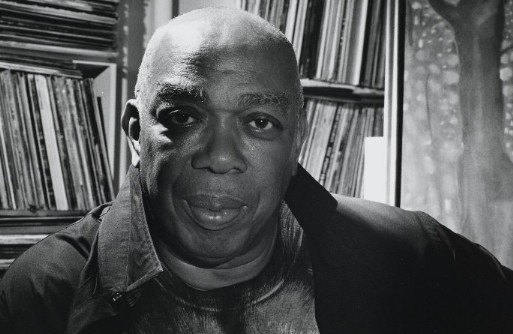
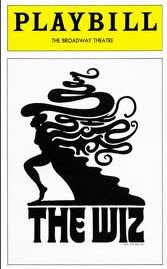
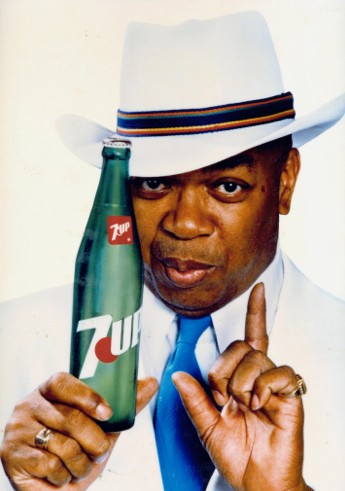
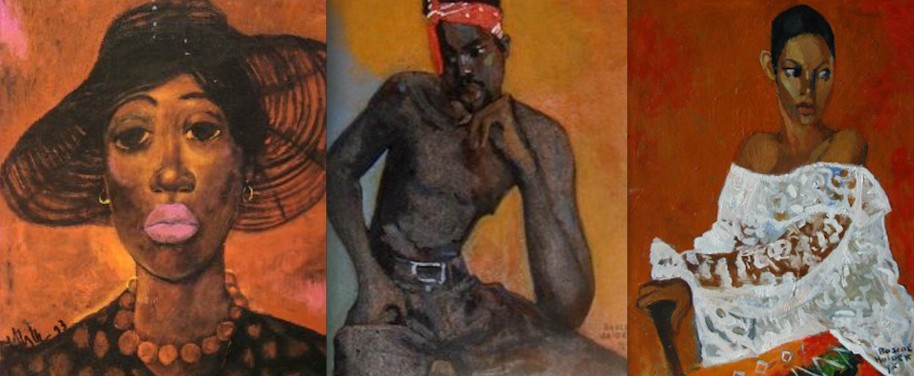
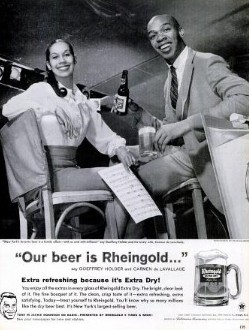
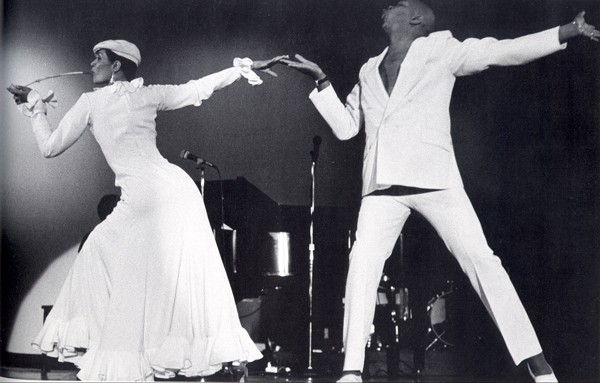




0 Comments